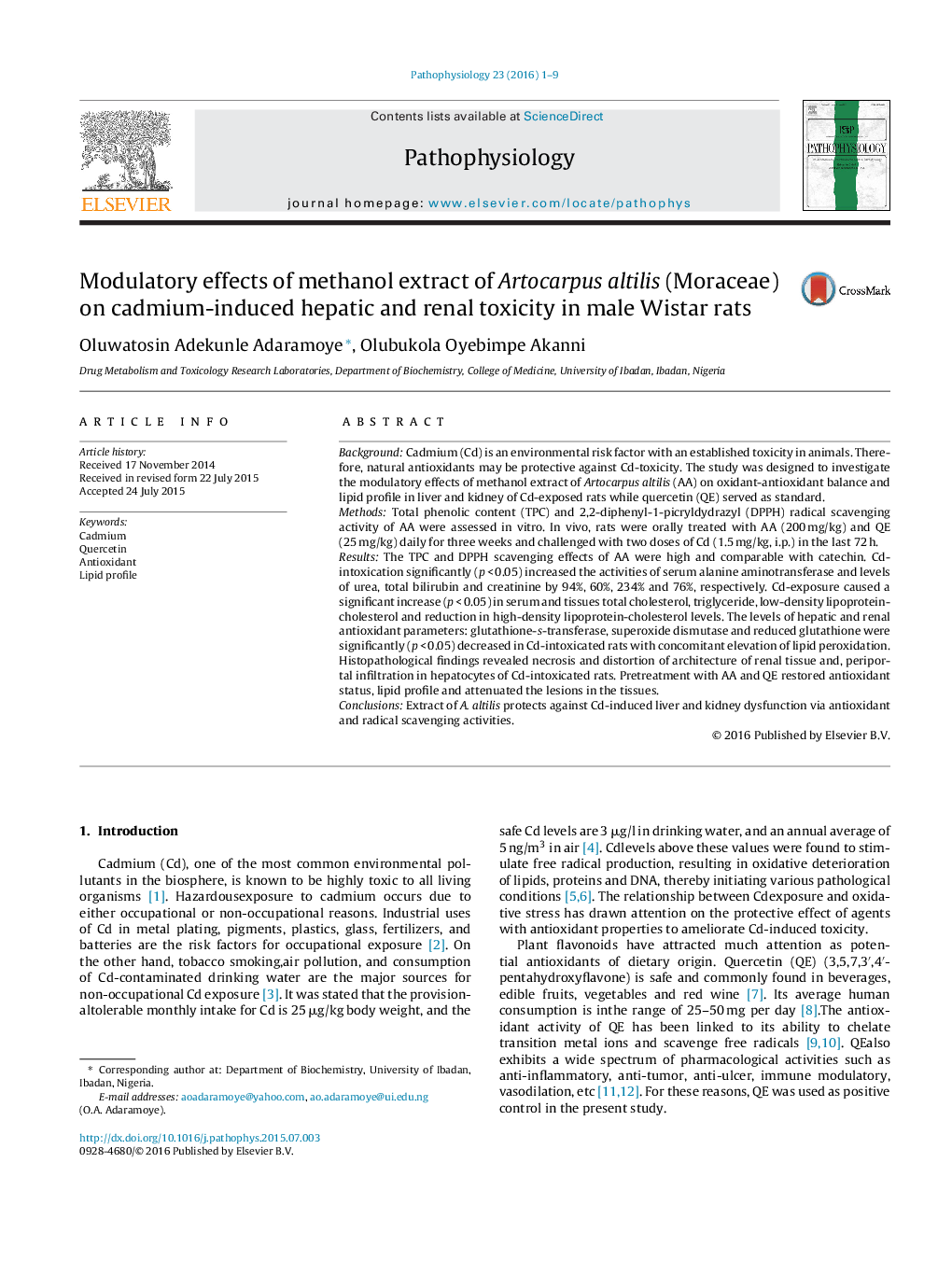| Article ID | Journal | Published Year | Pages | File Type |
|---|---|---|---|---|
| 4136949 | Pathophysiology | 2016 | 9 Pages |
BackgroundCadmium (Cd) is an environmental risk factor with an established toxicity in animals. Therefore, natural antioxidants may be protective against Cd-toxicity. The study was designed to investigate the modulatory effects of methanol extract of Artocarpus altilis (AA) on oxidant-antioxidant balance and lipid profile in liver and kidney of Cd-exposed rats while quercetin (QE) served as standard.MethodsTotal phenolic content (TPC) and 2,2-diphenyl-1-picryldydrazyl (DPPH) radical scavenging activity of AA were assessed in vitro. In vivo, rats were orally treated with AA (200 mg/kg) and QE (25 mg/kg) daily for three weeks and challenged with two doses of Cd (1.5 mg/kg, i.p.) in the last 72 h.ResultsThe TPC and DPPH scavenging effects of AA were high and comparable with catechin. Cd-intoxication significantly (p < 0.05) increased the activities of serum alanine aminotransferase and levels of urea, total bilirubin and creatinine by 94%, 60%, 234% and 76%, respectively. Cd-exposure caused a significant increase (p < 0.05) in serum and tissues total cholesterol, triglyceride, low-density lipoprotein-cholesterol and reduction in high-density lipoprotein-cholesterol levels. The levels of hepatic and renal antioxidant parameters: glutathione-s-transferase, superoxide dismutase and reduced glutathione were significantly (p < 0.05) decreased in Cd-intoxicated rats with concomitant elevation of lipid peroxidation. Histopathological findings revealed necrosis and distortion of architecture of renal tissue and, periportal infiltration in hepatocytes of Cd-intoxicated rats. Pretreatment with AA and QE restored antioxidant status, lipid profile and attenuated the lesions in the tissues.ConclusionsExtract of A. altilis protects against Cd-induced liver and kidney dysfunction via antioxidant and radical scavenging activities.
